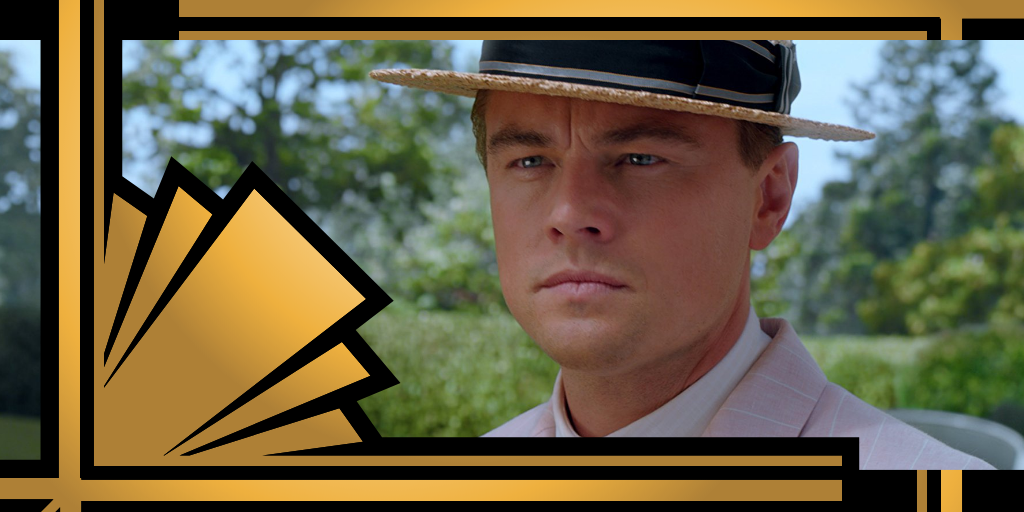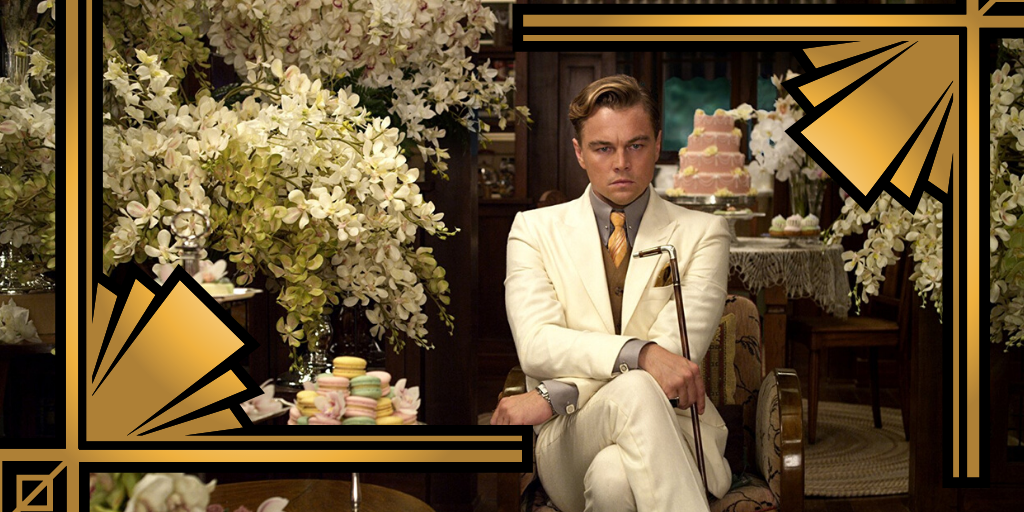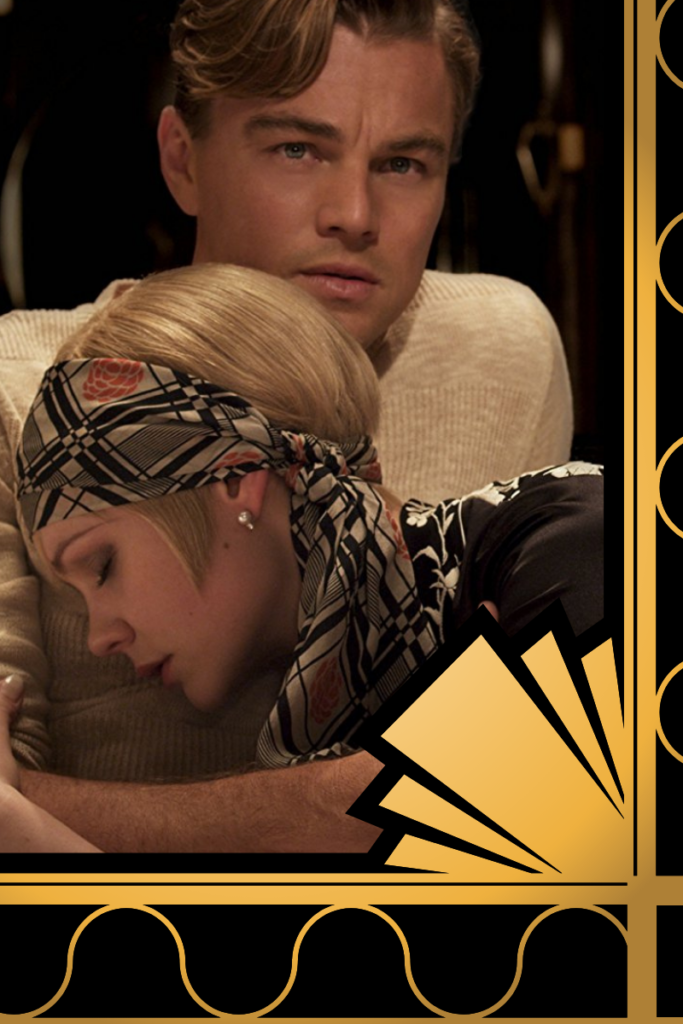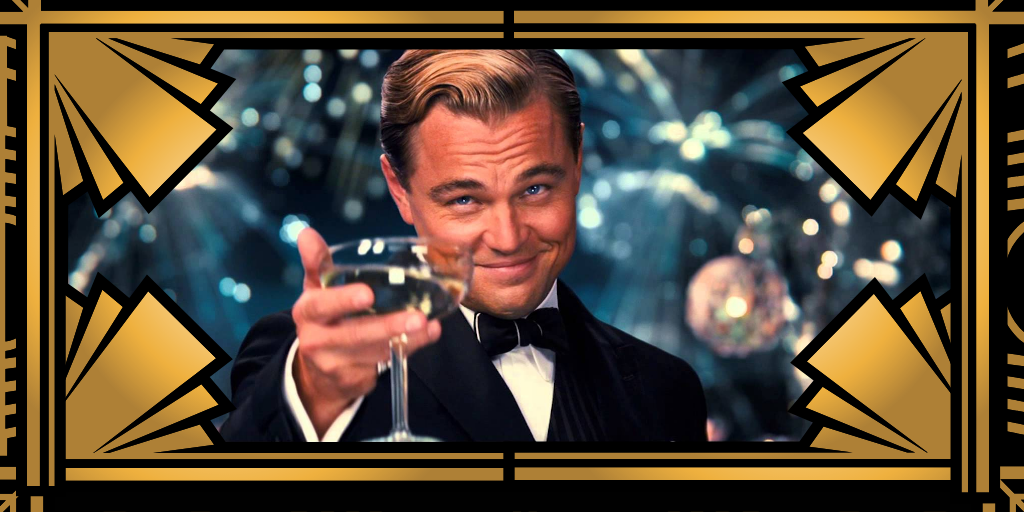It’s 2020, which has everybody in a swinging, nostalgic mood for the 1920s. In literature, it doesn’t get more 1920s than The Great Gatsby by F. Scott Fitzgerald. The book aptly describes the vapid, decadent, opulent time. The heart of the book, Jay Gatsby, represents how the human connection got lost within that decade of excess due to the rat race of trying to get more and be more, only to lose it all in the end.
A few years ago, when I was listening to The Great Gatsby on audiobook, I was struck with an idea after hearing our narrator character Nick Carraway describe Gatsby. Gatsby has always been represented throughout film history as a white man. But what if there was something more to Gatsby? What if he was a person of color who was able to pass for white?
You might be thinking I’m going all SJW with this. If you know me, you’d know that’s the furthest from my objective with any of my writing. So why am I suggesting that there could be an alternative reading of Gatsby’s characterization? Because the book itself seems concerned on some level with race. Why not then, have Gatsby be someone who continues the book’s fleeting conversation about race in the 1920s?

Let’s go through the book for some examples. To set the stage, let’s take the character of Tom Buchanan, the hateful husband of Nick’s cousin Daisy. Tom is described, even by Daisy, as a brute. Nick’s description also shows us that Tom comes from money, just like Nick and Daisy do. However, unlike Nick, Tom is a coarse individual trying to feign gentility, even though he’s actually just a racist bully in a nice suit.
Tom is a staunch believer of the supposed “superiority” of races, believing himself, Nick and (after some hesitation) Daisy to be descendants of the “Nordic” peoples. His idea came from reading a book written by a supposed “scientist” who believes in something that has a lot of people scared even today—the fall of white supremacy.
“I’ve gotten to be a terrible pessimist about things. Have you read ‘The Rise of Coloured Empires’ by this man Goddard?…The idea is if we don’t look out the white race will be–will be utterly submerged. It’s all scientific stuff; it’s been proved…It’s up to us who are the dominant race to watch out or these other races will have control of things.”
The Great Gatsby, pg 16
If we’re going by real life examples of “scientists” of the past, the book’s author probably couched his racist beliefs in eugenics-based pseudoscience, probably developed from mis-applying Darwin’s theory of evolution to human ethnicity. The same pseudoscience is what white terrorism groups like the KKK, neo-Nazis, Identity Evropa and others traffic in.
Interestingly enough, the book uses Tom’s racist beliefs as a way to show him as a lower-ranked person. Between Nick, Daisy, Nick’s mysterious paramour Jordan Baker and Gatsby, Tom is the least sophisticated of them all. His beliefs are used by the book to paint him as a fool and even more brutish than the reader could have ever imagined. I don’t know what Fitzgerald’s actual opinions were on racism, but apparently, he had some level of thought about it since he decided to include it as one of Tom’s defining characteristics. It also seems like he uses it as a denouncement of Daisy as well, because she’s too preoccupied with appearances and Tom’s money to care extensively about anything Tom talks about. The only thing she’s interested in is appearing to have a deeper personality than she actually does.
With Tom’s character set up as a racist, it becomes even more interesting to see how he reacts to Gatsby. First, Tom uses Gatsby’s “new money” designation as a reason to distrust him, calling him a “bootlegger.” Secondly, there’s Tom’s jealousy over Gatsby visibly vying for the love of his wife, Daisy, even though Tom himself has a fling with a woman named Myrtle. Thirdly, it could be inferred that the lack of ease Tom could have with Gatsby is also due to his appearance. As Nick described Gatsby after meeting him at Gatsby’s party:
“The nature of Mr. Tostoff’s composition eluded me, because just as it began by eyes fell on Gatsby, standing alone on the marble steps and looking from one group to another with approving eyes. His tanned skin was drawn attractively tight on his face and his short hair looked as thought it were trimmed every day. I could see nothing sinister about him.”
The Great Gatsby, pg. 54
Of course, it must be taken into consideration that Fitzgerald didn’t mean Gatsby was anything other than white. Many white authors have described their white characters as having tanned skin, such as when Edgar Rice Burroughs described Tarzan in Tarzan of the Apes. Gatsby’s tan is there to showcase how he’s been part of the working class for much longer than he’s been a part of the elite. Indeed, Nick describes him as a “rough-neck” in the film, indicating that even Nick sees him as someone who has known hard labor. But if we’re taking into account Tom’s racism, it makes Gatsby’s appearance even more compelling to the narrative. Would Tom see Gatsby as one of the “Nordic” race, or would he see him as something he should subjectify? Would Tom be angry at Gatsby because Gatsby, a non-“Nordic,” would dare to reach the same heights monetarily as Tom’s family? Would Tom be angry because Gatsby is arguably more infamous than him, despite his family legacy and supposed racial legacy? It’s a possibility.
It’s especially poignant to note that the music Gatsby was playing at his party was jazz. “Vladimir Tostoff’s Jazz History of the World,” as the fictional jazz piece was called in the book. Of course, jazz was the popular music of the day. But if we’re going by this alternative reading, it would be hilarious if Gatsby was playing the music because it’s the music of his people.
Of course, speaking class-wise, Gatsby is written to have an affinity for jazz because he is of new money and his character comes from a coarser background than the rest of his West and East Egg denizens. The music puts him in stark contrast from what might be playing at any party Tom and Daisy might conjure up. But with his alternative reading of the book, it’d be interesting if Gatsby was playing jazz as a quiet middle finger to those who might not have accepted him otherwise if he didn’t have tons of money to waste on parties. In a way, it goes to show how if you have money, people will overlook and tolerate almost anything.

Speaking of Gatsby’s background, his childhood could be a rags-to-riches story of a poor POC character from the 1920s. Born James Gatz, his parents were “unsuccessful farm people” whom James rejected because of their poorness. He eventually develops his new persona after living with millionaire Dan Cody, but before then, his early life is quite hard. And yet still, there is a pointed description of his skin.
For over a year he had been beating his way along the south shore of Lake Superior as a clam digger and a salmon fisher or in any other capacity that brought him food and bed. His brown, hardening body lived naturally through the half-fierce, half lay work of the bracing days. He knew women early and since they spoiled him he became contemptuous of them, of young virgins because they were ignorant, of the others because they were hysterical about things which in his overwhelming self-absorption he took for granted.
The Great Gatsby, pg. 105
Again, his skintone is put here to showcase how different he is from the “old money”—they get to stay out of the sun while he’s had to work in the sun for his whole life. But it’s tantalizing to read Gatsby as someone who has felt he was saddled with his skintone, something he felt both helped and hampered him as he climbed the ladder of success.
Of course, this brings us to Gatsby’s obsession with Daisy. Even in describing his first kiss with Daisy many years ago, skintone is mentioned, comparing Daisy’s “white” skin to his tanned skin. Gatsby sees Daisy as a personal goal. Yes, he loves her, but it sems like as the years have gone on, that love has turned more into an obsession to attain full acceptance by the societal elite. Of course, in the 1920s, that group was comprised mostly of white people. Daisy is a prize for Gatsby in many ways. Whether you interpret Gatsby as a white man or a man of color, Daisy represents an element of legitimacy new money could never earn. But if we see Gatsby through the lens of race, then Daisy represents even more. Not just a legitimate way into the old money sect, but a way to have the ultimate rags-to-riches story. With Daisy, a POC Gatsby would have successfully forced himself into the uppercrust, a place someone like him would have been denied in. He would have become his definition of a self-made man.
But if we do read Gatsby in this way, then that also makes Gatsby inherently problematic. As Black women or other women of color have stated many times over throughout the years, it’s annoying, to say the least, when a Black man (or a man of color in general) uses whiteness as a way to prove his legitimacy. We see the narrative come up all the time with Black athletes and Black superstars, who crop up with white women on their arm. The most recent offender has been NBA player Patrick Patterson, who showcased his own self-hating and colorist tendencies when he bullied Black women while trying to uplift his wife. Keep in mind that I’m not lumping every man of color who marries a White woman into this discussion; I’m simply talking about the men of color who see whiteness as a goal to reach.
If Gatsby is a man of color, particularly one who can pass, does his obsession with Daisy mean he has colorist or even self-hating tendencies? Since he hates his poor childhood, does that also mean that a POC Gatsby would hate his poor, non-white parents as well? Would he view his transition into Jay Gatsby as a transition toward whiteness, with Daisy being the key to his final form?

If that is the direction an alternative reading of Gatsby takes us, what new layers are added to Gatsby’s death? I feel that could be a litmus test for the individual reader. For me, I see a cautionary tale—do not change yourself so much for fame and riches that you no longer recognize yourself, which is what happened to Gatsby. To add to that, trying to ascend to whiteness—that is, trying to ingratiate yourself into the upper echelon of white supremacy—will always result in some level of emotional tragedy, with Gatsby’s death a symbol of the emotional turmoil a person can undergo when trying to deny all the facets of themselves and their culture.
I know that with Hollywood films, there’s a school of thought that states that we don’t need anymore remakes of classic White stories with POC actors in the roles. I tend to agree; sometimes, it seems less imaginative to simply stick someone into a role just to make a superficial point. However, I do like it when a classic story is given a new, more contemporary life, since sometimes, the new film is actually more in keeping with the times the story came from. For instance, England in the 1700s and 1800s was more diverse than we have been accustomed to seeing in film, and certain films such as Mr. Malcolm’s List, The Personal History of David Copperfield and Wuthering Heights, as well as TV shows like Harlots and Garrow’s Law showcase how people of different backgrounds did make their way, regardless of the societal hurdles they had to cross. The Personal History of David Copperfield , in particular, seems to use the same type of alternative reading style I used for The Great Gatsby to interpret the title character (played by Dev Patel).
When films think more about how their alternative casting can be used to retell a classic story from a more relevant point of view, then I think a film is in a position to do something no one expected. It can bring forth conversations that might have gotten lost in other retellings. So, while we might groan at another The Great Gatsby, I would be down to see one starring a person of color. I’d love to see the layers that could be added to Gatsby’s character if we were to think that the massive chip he had on his shoulder was created because of his disorganized relationship to his race as well as to his class.
Images: Warner Bros., Illustrations: Monique Jones
